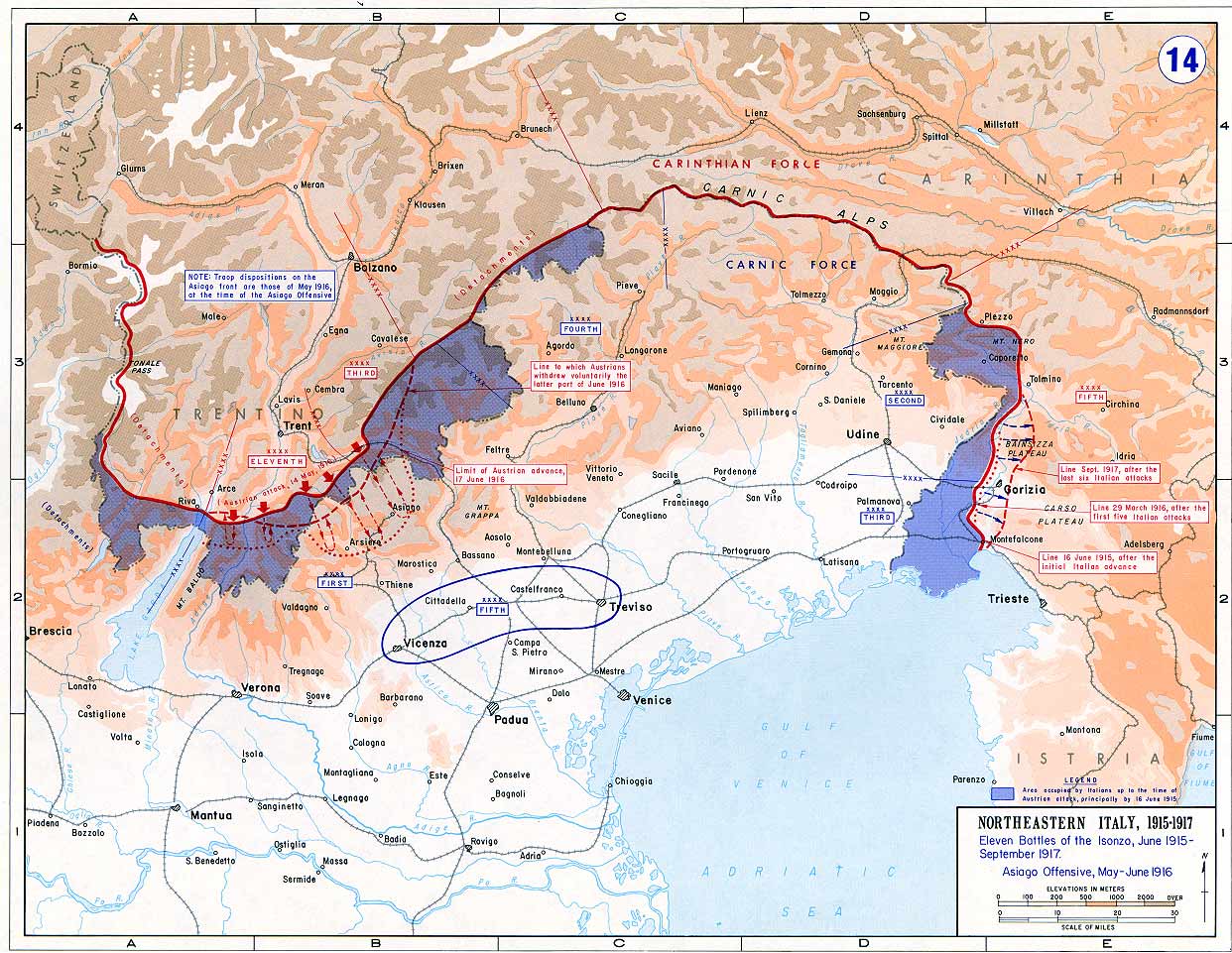Front along Isonzo river
1. Isonzo front
The catchment area of the Isonzo river was the borderline between Italy and Austria-Hungary. The Isonzo front stretched from the north of the Julian Alps and continued south toward the Adriatic Sea. On ths front the eleven Isonzo battles took place, together with the 12th battle which included the German-Austro-Hungarian offensive and the breakthrough of the front at Caporetto. The Isonzo front began in the north in the Tolmin valley. The peak Krn was the precise operational boundary between the Rohr Carinthian group and Boroevic´s Isonzo forces. From Krn, the front line ran through S.Lucia, Avce, Kanal and Plave to Monte Sobotino. From there, an important Austro-Hungarian bridgehead stretched along the western bank of Isonzo, which ended at the south west edge of the town Gorizia. From the town, the line went back down to the river and went up to the Monte San Michel and Doberdo. In the final stretch, the front loped down over San Giovanni al Timavo to Duino and the Adriatic coast.
Italian front 1915-1917

Source:
https://cs.wikipedia.org/wiki/Bitvy_na_So%C4%8Di#/media/File:Italian_Front_1915-1917.jpg
The south wing of the Austro-Hungarian defense was stretched in the area under Gorizia and the karst character of these highlands was very unfavorable, with labyrinthine, impassable and uncovered terrain, and the difficulty of building shelters and engineering work. The flat and slightly waved area on the opposite west bank of the Isonzo river provided the Italian army many advantages, especially the easy deployment of numerous infantry and artillery, and a fast maneuvering and undisturbed flow of reserves from the Italian hinterland. Therefore, the Italians could launch mass attacks with tremendous artillery support, comparable to the trench warfare on the western front. Both sides knew how strategically important the Isonzo river basin was because if the Italians succeeded in breaking the front, this would mean a disaster for the entire Austro-Hungarian front.
The Italian army could move quickly into inland of the empire (up to Ljubljana) and to the Dalmatian coast. This would have decided about the war. The Italian General Staff, led by Lieutenant-General Luigi Cadorna, tried to make a breakthrough on the Isonzo front. Here was the core of the Italian field armies, and Austro-Hungarian General Staff had to gradually withdraw all the forces that could be released from the eastern front, the Balkans, or the mountain sections of the Italian front.
Source:
ČEPELKA, M.: Fronta v Dolomitech 1915-1917, Lysá nad Labem 1997.